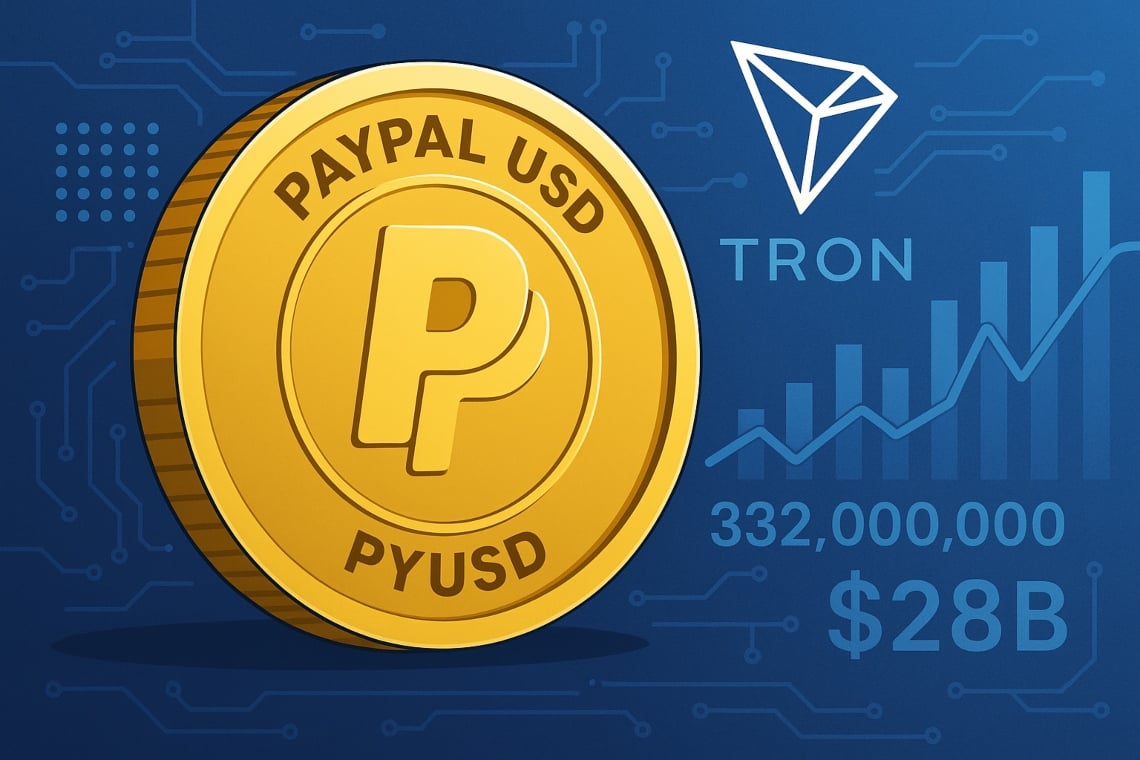MEV Spam: The Hidden Blockchain Scalability Crisis
Between November 2024 and February 2025, MEV spam bots consumed nearly all of Base’s 11 million gas per second throughput increase — equivalent to the capacity of three Ethereum mainnets — according to Flashbots’ latest research led by Robert Miller.
This highlights a fundamental issue affecting Solana and several Ethereum rollups like Base: regardless of a network’s transaction capacity, it can hit a “MEV spam wall” that severely limits the allocation of useful Compute Units (CUs).
On average, these spam bots consume over 50% of gas while contributing less than 10% of transaction fees, making them not only resource-intensive but also economically inefficient.
This inefficiency drives up user fees and undermines the scalability of blockchain networks.
The impact extends beyond technical metrics; it affects user experience, elevating transaction costs and reducing the overall efficiency of blockchain ecosystems.
First to understand how this happens, let’s tackle why this spam exist to begin with.
The Root of MEV Spam: Private Native Memepools
Those whose teeth grind at the mere mention of MEV would undoubtedly argue that all on-chain MEV activities are prime-grade spam.
But that’s not today subject!
In blockchains that implement native private mempools to protect users from front-running, MEV searchers must continuously deduce the contents of upcoming blocks to identify arbitrage opportunities, as they cannot directly observe pending transactions.
MEV searchers rose to the challenge posed by the disappearance of public mempools by adapting how they capture arbitrage opportunities. Since they can no longer observe transactions before a block is published, waiting until block publication to act would be too late to profit from arbitrage.
To overcome this, MEV searchers must “infiltrate” each block proactively by submitting transactions that will be executed within the same block, allowing them to secure arbitrage profits despite the lack of public transaction visibility.
MEV searchers flood the network with numerous zero-sum transactions that impose high computational costs and consume significant blockspace.
In his demonstration Robert Miller used the example of a MEV spam he detected on Base, which involved a transaction consuming over 2.6 million gas without transferring any tokens. The transaction executed numerous price query calls to multiple DEX pools. If an arbitrage opportunity was detected, the bot would proceed with the trade; otherwise, it would terminate without action.
MEV Spam transaction — Source: MEV and The Limits of Scaling by Robert MillerMiller identified the transaction’s MEV spam nature immediately due to its exceptionally high gas usage, even before delving into the specifics of the transaction.
However, these transactions often pay discounted fees relative to their resource usage, leading to economic inefficiencies and losses for the network, which bears the cost without adequate compensation.
Cheap Fees, High Compution Cost and Highly Concentrated Spam
In another example, Robert Miller demonstrated a successful arbitrage transaction on Base, where a bot earned $0.12 in profit by spending $0.02 in fees.
Succesful MEV arbitrage on Base — Source: MEV and The Limits of Scaling by Robert MillerAt first glance, this might seem efficient. However, Miller revealed that the true cost was staggering: the bot executed approximately 350 attempts, consuming around 132 million gas — equivalent to nearly four full Ethereum blocks — before achieving a single successful arbitrage.
Even more concerning, Miller pointed out that this arbitrage opportunity was one of several competing for the same spot, amplifying the total cost to the network. While the bot earned only measly $0.12 in profit, the substantial computational resources consumed by multiple bots vying for the same opportunity resulted in a significantly higher cost to the chain.
This highlights a significant inefficiency, as the network expended substantial resources for minimal profit.
Similarly, with the previous exemple, ~2,600,000 gas was used just to read the market and then do nothing.
In the four blockchain observed for the study: Unichain, Optimism, Base and World, sometime the share of network gas used by MEV spam bots crossed 75%!
Share of Gas Used by Spam Bots on World, Base, Optimism and Unichain — Source: MEV and The Limits of Scaling by Robert MillerOn OP Mainnet, these bots consumed approximately 57% of the gas but paid only about 9% of the fees — a sixfold difference.
Ratio Fees Paid Versus Gas Used by MEV Spam Bots — Source: MEV and The Limits of Scaling by Robert MillerAnother researcher, Chris Co-founder of Ghost, discovered that on Solana, similarly, these bots consumed approximately 40% of the compute units but paid only about 7% of the fees — a sixfold difference.
Solana MEV Spam Impact — Source: ChrisChang43This disparity highlights the significant external costs spam imposes on the network without providing corresponding value.
If they can spam at this level, it’s first and foremost because fees are cheap, making spam affordable and ulitmately profit generating for them.
According to Miller:
The cost of the fees are even driven lower as Miller discovered that the spam market is highly concentrated.
While diving deep into smart contracts involved in the spamming activity, it appeared that the spam market isn’t fragmented but takes almost the form of a duopole, with on the Base network, over 80% of spam activity concentrated in the hands of just two entities.
MEV Spam Concentration on Base — Source: MEV and The Limits of Scaling by Robert MillerThe dominance of these two entities in the MEV space reduce market competition which directly undermines effective price discovery, meaning the network fails to capture the true value of the MEV being extracted.
The extreme concentration of MEV spam activity among just a few entities creates significant barriers to entry and reduces competitive pressure, which in turn suppresses true price discovery; because the market is dominated by a small number of sophisticated operators controlling most of the spam and arbitrage profits, there is little incentive for fair bidding or efficient market pricing, causing the blockchain to fail at capturing the genuine economic value of MEV
Miller’s alarming findings didn’t stop there. By analyzing spam’s impact on Base, a Layer 2 rollup, and the underlying Ethereum Layer 1 network, his research revealed that in February 2025, spam transactions accounted for roughly 56% of Base’s gas usage and simultaneously generated about 26% of Ethereum L1’s data availability load.
MEV Spam Gas Used , Ethereum Data Availability and Fees Paid on Base in February 2025 — Source: MEV and The Limits of Scaling by Robert MillerData availability means that although transactions are executed off-chain on Base, their data must be published and accessible on Ethereum Layer 1 to ensure security and consensus. This heavy L2 activity increases the amount of data stored and processed on Ethereum, placing significant strain on Ethereum’s network capacity, potentially leading to congestion and higher costs for its users!
Spam: The “Dominant Limit” to Scaling Blockchains?
So, to summarize, MEV spam is a chain congesting, computing usage squandering, profit losing activity that impact L2 rollups but also the underlying L1.
Due to the systemic nature of the issue, MEV bot going in blind in short, logically even when you scale a network, you will naturally just scale the level at which those spam will operate.
This is why during his research Miller discovered that this spam os “neutralizing the benefits of scaling.”
He has observed that from November 2024 to early 2025 on Base, total gas throughput increased significantly, but the gas actually used by legitimate users stayed nearly flat — meaning most of the growth was due to spam transactions. Miller alleges that after mid-February, following the Libra scandal, legitimate user activity and gas usage began to rise again, likely driven by increased trading and MEV opportunities as memecoin trading volume dropped.
Effective Gas Throughput on Base Nov. 2024 — Feb.2025 — Source: MEV and The Limits of Scaling by Robert MillerThe Spam Impact on Legitimate Users
As we have already touched upon, MEV spam has the more impact on users who suffers the impact of congestion and rising transaction fees.
Perhaps the most direct and damaging impact of MEV-induced spam on users is the persistent, artificially elevated baseline for transaction fees. Even as Layer 2 rollups like Base have succeeded in technically scaling throughput and lowering average fees to fractions of a cent, the constant presence of spam undermines this achievement.
Base Fee and Gas Usage on Base — Source: MEV and The Limits of Scaling by Robert MillerAs Miller underlined in his report, in theory, with sufficient blockspace, modern fee markets like EIP-1559, and users becoming price-insensitive at very low fees, networks should settle into a near-zero fee regime. But in practice, that doesn’t happen.
MEV searchers, in their race to extract value, overwhelm blocks with zero-sum, high-compute transactions. This excessive spam pushes block utilization upward, inflating the base fee not because of genuine user demand, but due to a structurally inefficient MEV market.
The result is a fee environment that’s higher than it needs to be, silently pricing out emerging use cases like agentic micropayments or onchain social platforms that rely on abundant, cheap blockspace.
It translates into transaction delays, execution failures, and a degraded experience — despite the chain appearing “fast” on paper. This is especially visible during market spikes, such as memecoin surges, when MEV bots flood the network in pursuit of short-lived arbitrage. A striking example occurred on Solana in April 2024, when memecoin mania drove a wave of bot activity that overwhelmed the network. Users reported transaction delays of up to 40 seconds, widespread ping losses, and failures even after dozens of retries. One user claimed to have submitted the same transaction 30 times without success.
Fees, usually fractions of a cent, ballooned as high as 1 SOL (roughly $175 at the time) despite most transactions still failing. Wallet interfaces filled with confusing errors, and users with no understanding of MEV mechanics were left frustrated or locked out entirely. Although Solana’s architecture is designed for high throughput, what users encountered wasn’t a bandwidth problem, it was a compute bottleneck.
On-chain metrics confirmed the scale of the collapse. Over a two-day window, around 75% of all non-vote transactions failed, with average failure rates hovering near 40% in the following weeks. While most of these failed attempts were from bots, the impact was network-wide: real users saw their activity delayed, priced out, or discarded altogether. This illustrates the deeper point: as long as spam dominates compute and blockspace, fee markets lose their ability to reflect genuine demand, and users suffer. The network becomes congested not by use, but by waste.
In short, the promise of scalable, low-cost blockchains is being quietly undermined — not by insufficient throughput, but by an arms race of spam that consumes resources without adding value.
TEEs and Explicit MEV Auctions, the Solutions to MEV Spam?
In his demonstration Miller designed to plausible solutions to put an end to this dominant limit:
1.Programmable Privacy using Trusted Execution Environments (TEEs)
Imagine a super secure private room (TEE) that lets these bots safely peek at the exact transaction order and details before the block is finalized, but without leaking or misusing private user info, so that “a searcher can only backrun transactions and can’t frontrun, sandwich, or leak private data.” This way, bots can know exactly what’s coming without having to spam the network with guesses.
2.Explicit MEV Auctions
The other proposition by Miller is that, instead of competing by spamming numerous gas-heavy transactions to get their transaction ordered in the block, bots should bid directly for the spot they want through a proper auction. Whoever values the spot most wins, and the order is determined in a fair, transparent way. Mechanically, normal price discovery should then be restored. To Miller, “Adoption of MEV auctions is not a luxury but a strategic imperative.”
Conclusion
Blockchains face an MEV dilemma: either expose users to frontrunning and sandwich attacks, or keep transactions private and risk overwhelming MEV spam.
Failed MEV attempts monopolize resources, distort price discovery, undermine blockchain scaling efforts, and create financial and usability issues for everyday users.
Addressing this challenge should be a top priority on blockchain agendas. With technological creativity and implementable solutions — possibly like those proposed by Miller — there’s hope that this central issue will be resolved in the near future!
Well, only time will tell!
MEV Spam: The Hidden Blockchain Scalability Crisis was originally published in Coinmonks on Medium, where people are continuing the conversation by highlighting and responding to this story.
You May Also Like

Nvidia Partners with Former Crypto Miner Nscale for UK AI Infrastructure Project

Top Crypto Coins to Invest in October 2025: AlphaPepe Presale, Chainlink Growth, and Ethereum Momentum
